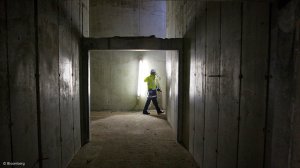Amendments to construction health and safety laws put onus on client, contractor
The February amendments to the construction regulations under the Occupational Health and Safety Act (OHSA), No 85 of 1993, have significant implications for employers in the construction sector, placing additional responsibility for health and safety compliance on the client, contractor and designer of a project.
Legal representatives from local law firm Webber Wenzel said at a seminar on Thursday, that Construction Regulations 2014, which were promulgated on February 7, were applicable to all persons involved in construction work, but did not apply to cases where construction work was carried out in relation to a single-story dwelling for a client who intended to reside in the dwelling upon completion.
The amendments expanded the definition of construction work to include any work related to the construction, renovation, alteration, repair or dismantling of a structure.
According to the amendments, all construction projects on which construction work started after February 7 had a six-month period from this date to apply the new regulations, while construction work that had started before or on February 7 had until August 6, 2015, to incorporate and apply the new regulations.
Until this time, the now repealed Construction Regulations 2003 would be applied.
FORMALISED RESPONSIBILITY
Employment and employer benefits group partner Kate Collier explained that a key objective of the regulations was to formalise and strengthen the over-inspection and responsibility between the parties involved in a construction-related project.
“A key change to the regulations is that there is added responsibility on the client for whom the work is being done and closer supervision [is required] by the client and a more involved approach by the Department of Labour (DoL),” she commented.
The first significant change under the new regulations, Collier elaborated, was the requirement that a client, intending to carry out construction work, must obtain a permit from the DoL provincial director prior to the start of construction.
This was intended to allow the provincial director to inspect certain health and safety documents to, thereby, satisfy that the client had taken the necessary precautions to ensure that the work, as far as reasonably practicable, could be carried out safely.
“This requirement, which is in addition to the previous notification of construction work required of a contractor, will only be required if the work exceeds 180 days, involves over 1 800 person days of work and includes contracts for work that is equal to or exceeds R13-million, or is for Construction Industry Development Board grading level 6,” Collier said.
Until the client had obtained this permit, the regulations prohibited the start of construction work.
“This is meant to avoid a situation where the client palms off responsibility to the primary contractor,” she noted.
Additional changes had been made to the notification requirements contained in the 2003 regulations, which made it incumbent on the contractor to make the notification of intended construction work to a provincial director, in writing, at least seven days before work was to be carried out.
This condition held if the work comprised any other work than that which required a permit and included excavation work, working at a height where there was a risk of falling, demolition of a structure or the use of explosives to perform construction work.
“Don’t take a risk. If you feel [your construction work] falls within these parameters, make the notification,” Collier advised.
CLIENT RESPONSIBILITIES
Elaborating on the additional responsibilities of the client under the newly promulgated regulations, she noted that, while the 2003 regulations placed obligations on the client, these were in many respects limited to the initial engagement of a contractor and the establishment of systems.
The 2014 regulations required the client to be more involved in the engagement of contractors with regard to safety specifications, with many of these obligations appearing to formalise a process that would ordinarily be followed by the client.
Among these obligations, the client would be responsible for a baseline risk assessment, a site health and safety inspection, designer oversight, cooperation management, the sign-off and approval of a health and safety plan and the oversight of reporting incidents.
The client would also be responsible for the appointment of an agent, which would perform the obligations of the client, manage the health and safety on a construction project and be registered with a statutory body approved by the DoL chief inspectorate.
CONTRACTOR RESPONSIBILITIES
Principal contractors on a project had additional responsibilities under the amendments and were required to ensure that a site-specific health and safety plan was reviewed and updated as work progressed.
The company was required to open and keep on site a health and safety file, which would include all documentation required in terms of the OHSA and its regulations.
In addition, the regulations required contractors to ensure that all employees underwent health and safety training and had a medical certificate of fitness.
“Moreover, the appointment of a full-time, component construction manager remains compulsory. Their responsibility will be to manage all the construction activities on a single site, including the duty of ensuring occupational health and safety compliance,” said Collier.
DESIGNER RESPONSIBILITIES
She added that an addition to Construction Regulations 2014 included a clarification of the duties of the project designer, which would be responsible for ensuring that safety standards were complied with during the design of the project and preparing a report prior to tender.
This report would be required to set out all relevant health and safety information about the design, which may affect pricing, geotechnical aspects and the loading the structure would be able to withstand.
Designers were identified as architects, surveyors, interior designers, shop fitters and landscapers.
Comments
Press Office
Announcements
What's On
Subscribe to improve your user experience...
Option 1 (equivalent of R125 a month):
Receive a weekly copy of Creamer Media's Engineering News & Mining Weekly magazine
(print copy for those in South Africa and e-magazine for those outside of South Africa)
Receive daily email newsletters
Access to full search results
Access archive of magazine back copies
Access to Projects in Progress
Access to ONE Research Report of your choice in PDF format
Option 2 (equivalent of R375 a month):
All benefits from Option 1
PLUS
Access to Creamer Media's Research Channel Africa for ALL Research Reports, in PDF format, on various industrial and mining sectors
including Electricity; Water; Energy Transition; Hydrogen; Roads, Rail and Ports; Coal; Gold; Platinum; Battery Metals; etc.
Already a subscriber?
Forgotten your password?
Receive weekly copy of Creamer Media's Engineering News & Mining Weekly magazine (print copy for those in South Africa and e-magazine for those outside of South Africa)
➕
Recieve daily email newsletters
➕
Access to full search results
➕
Access archive of magazine back copies
➕
Access to Projects in Progress
➕
Access to ONE Research Report of your choice in PDF format
RESEARCH CHANNEL AFRICA
R4500 (equivalent of R375 a month)
SUBSCRIBEAll benefits from Option 1
➕
Access to Creamer Media's Research Channel Africa for ALL Research Reports on various industrial and mining sectors, in PDF format, including on:
Electricity
➕
Water
➕
Energy Transition
➕
Hydrogen
➕
Roads, Rail and Ports
➕
Coal
➕
Gold
➕
Platinum
➕
Battery Metals
➕
etc.
Receive all benefits from Option 1 or Option 2 delivered to numerous people at your company
➕
Multiple User names and Passwords for simultaneous log-ins
➕
Intranet integration access to all in your organisation





















